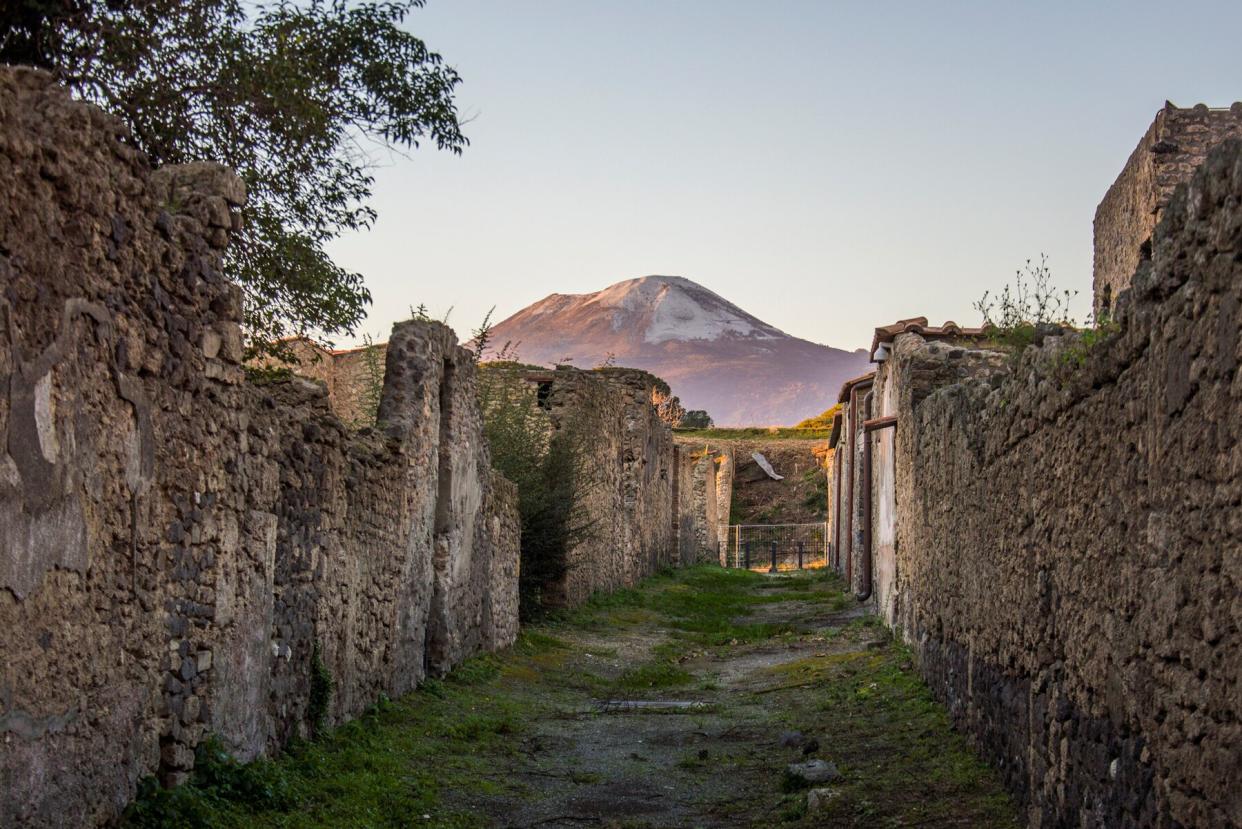American Tourist Rescued After Falling Into Crater of Italy's Mount Vesuvius

Getty Images
Seeing a volcano up close can be one of the most amazing experiences in the world, but it can also be dangerous if not done right.
This week, a 23-year-old American tourist was rescued after falling into the crater of Italy's Mount Vesuvius volcano, which famously erupted in 79 A.D. and buried the nearby town of Pompeii in ash. The man was climbing on unauthorized paths because he reportedly did not have an entrance ticket, Paolo Cappelli, the head of the Confesercenti tourism group for Vesuvius, said in a statement.
The tourist was rescued last Saturday after a service team of volcanological guides spotted him "in serious trouble," said Cappelli. A guide was then lowered down on a rope "about 15 meters to allow them to secure the inexperienced tourist."
"The boy was brought to safety by our guides, who then also provided him with…treatment, as he had multiple bruises on his legs, arms and back," said Cappelli, adding that the police were later called.
"The life of the volcanological guides is not simple: They are always on the crater to safeguard the safety of tourists and, therefore, recognizing the promptness and professionalism shown also on this occasion seemed to me the right thing to do," said Cappelli. "Having spoken directly with the rescuers, I can safely say that last Saturday on Vesuvius, they saved a human life."
Hiking near active volcanoes can be even more dangerous, as was evident when a White Island volcano erupted in New Zealand in 2019, killing more than a dozen people.
But there are steps travelers can take to explore volcanoes safely. Hikers should use open trails and roads and stay on marked paths, as well as avoid cliffs, cracks, and steam vents as these may collapse or be slippery, according to the National Park Service (NPS). Additionally, travelers should wear sunscreen, a hat, sunglasses, and sturdy, closed-toe shoes, since "hiking on lava rock can be hazardous due to uneven, unstable, and sharp hiking surfaces."
"Stay out of closed areas," the NPS noted. "Visitors in closed areas put visitor resource protection staff at risk."

